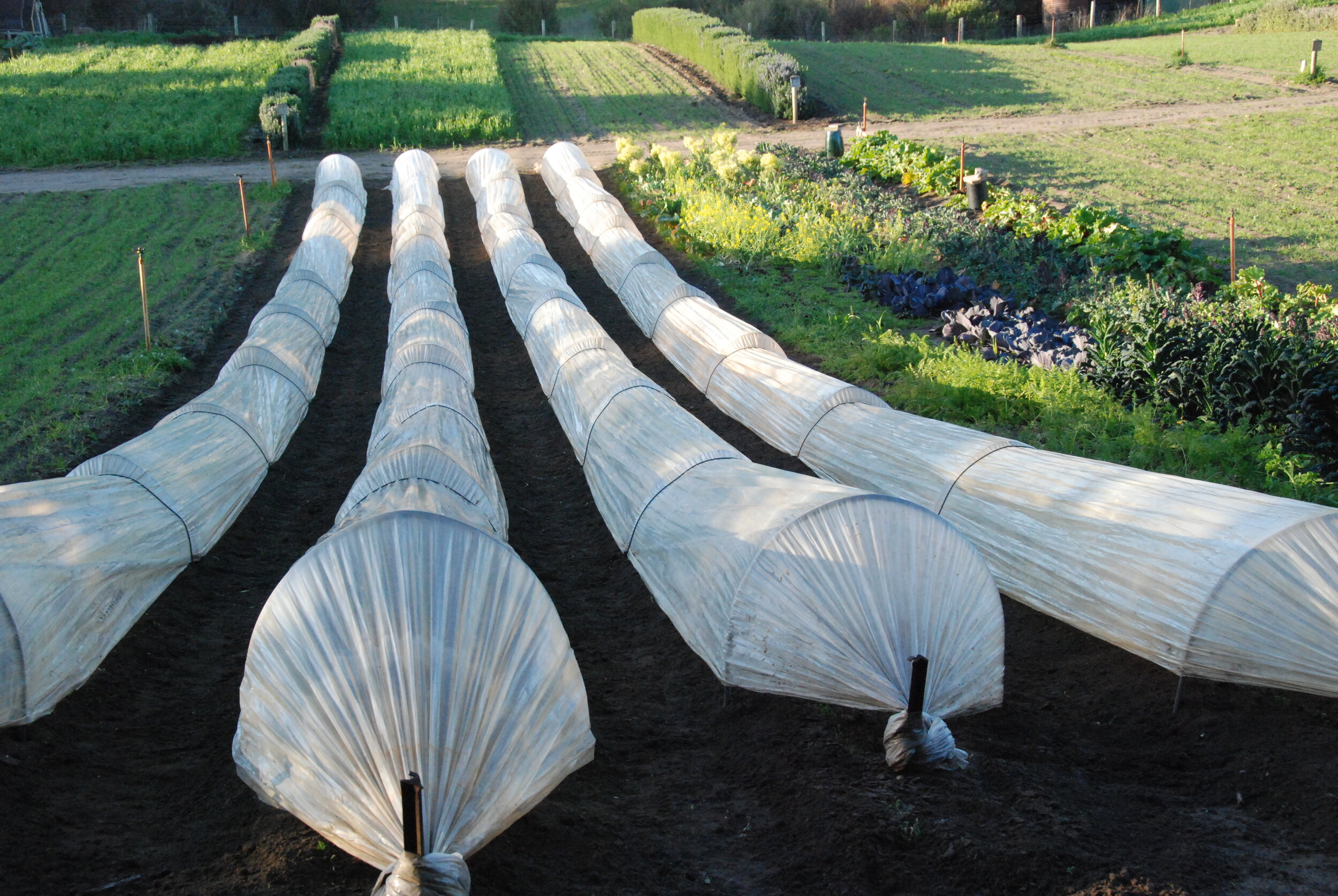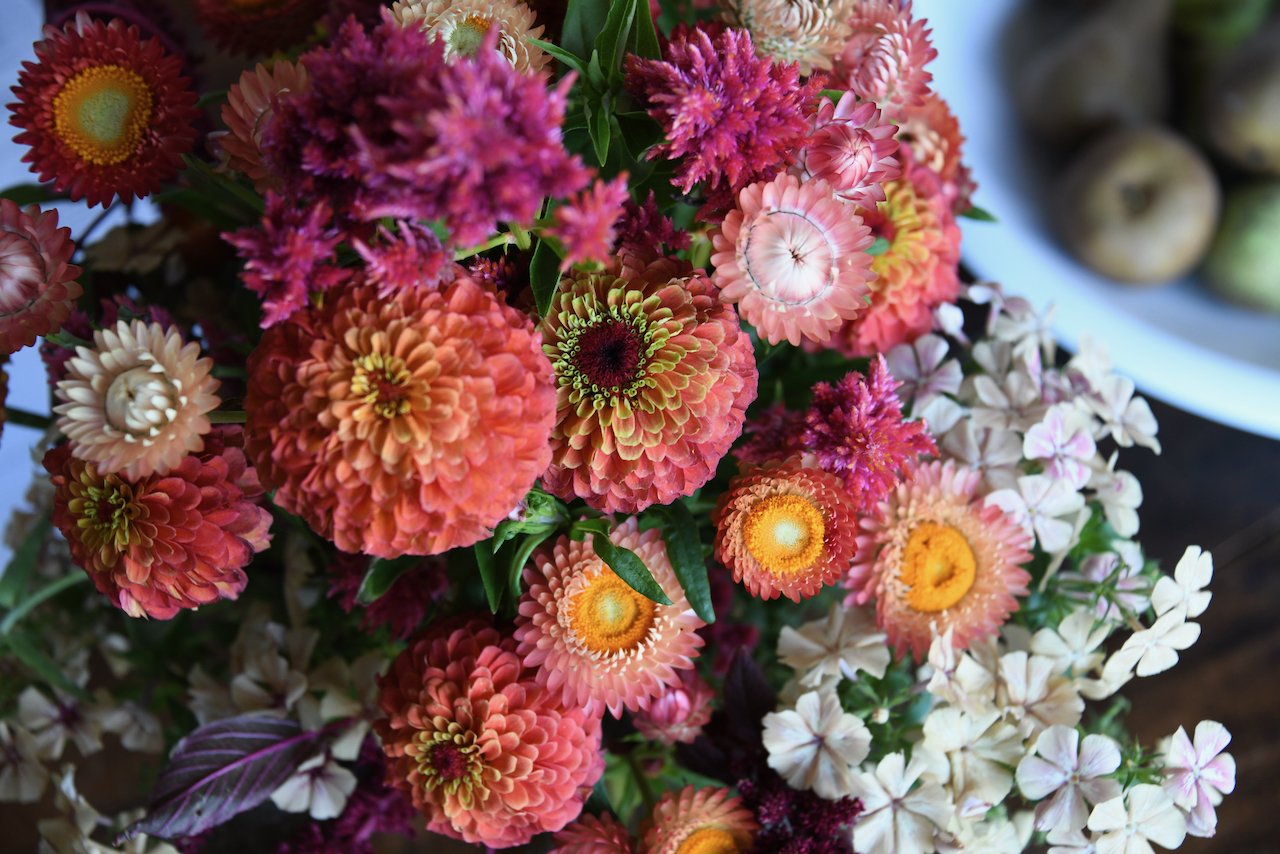Sowing and Transplanting in October
/December harvest from crops sown August - October
October is the month that finds us questioning- should we transplant NOW? It is also the month to spring into action with seed sowing. The growing season is upon us!!
To determine the “right” time to direct sown and transplanted warm season crops monitor nighttime temperatures. Many of the cold sensitive crops such as tomatoes, basil, eggplant, capsicum, zucchini can be permanently set back if transplanted too early. We mitigate this risk by using row covers and poly tunnels.
In the home garden, you can provide them protection on cold nights with hoops and blankets, planting next to a wall (which stores thermal heat) or covering them with domes.
We have made a simple temperature chart to assist - here.
And you can read about sowing seeds for cool season and warm season crops here.
Row covers protecting zucchini transplants
Here are the crops we sow and transplant in October:
Tomatoes
It is easy to sow tomatoes now! And with the summer predicated to be warmer then average, you have a great chance of harvesting basket loads. We are thinking about best transplanting date for our field tomatoes - anywhere from mid October - Early November depending on temperature. We have found that if wait until night temperatures are consistently above 15C, we have robust growth that thwarts disease and pests.
Basil, Marigolds and Herbs
We start basil and marigolds AHEAD of the field tomatoes, transplanting the flowers and basil earlier to attract beneficial insects to the tomatoes
We continue to successively sow coriander- as the days grow longer, its desire to bolt or shoot up to flower increases
We usually sow parsley 3 times throughout the season to keep a strong supply
Zucchini, Summer Squash and Cucumbers
We love ‘Ronde de Nice’ Zucchini as it is our earliest, very prolific and one of the tastiest zucchini.
We start our first crop of these inside the greenhouse and transplant them out in mid-late October. In our late frost prone fields, we plant our first seedlings with protection from wind and frost, ensuring the earliest of harvests.
We will successively sow these, starting the next crop when the first flowers, mitigating our risks from frost and disease. And ensuring a continuous harvest throughout the warm season.
Greens
Icebergs like Red iceberg, Head Cardinal, Joker and Reine d’Glace
These lettuce shine from September - December, Early January
interplant with alyssum to help attract beneficial insects that eat aphids
Spinach, Silverbeet, Agretti, Orach
Rocket, Bok Choy, Tatsoi, Mustards, Mizuna (We interplant these with our other brassicas AND we cover them with insect netting! (see below))
Celery - we continue to sow and transplant celery for a continuous supply
Roots
Onions and Leeks
If you are wanting bulbing onions, SOW NOW!! We offer intermediate to long daylight bulbing onions
We successively sow spring onions from now through March. We use ‘Red Long of Tropea’ onions like spring onions as they are sweet and colorful and work well cooked and raw
We have started our leeks from August - October. As we really like leeks in late Autumn and Winter, we find a late September- mid October start works well for us.
Flowers
Summer Cut Flowers of Zinnias, Celosia, Cleome, Phlox, Salvias, Strawflowers, Scabiosa (Pincushion Flower), Cosmos
Flowers that attract beneficial insects such as alyssum, calendula, marigolds and dill
Successive plantings of fillers such as pennycress and mignonette
Sunflowers
Capsicum, Eggplants and Chilies
We are thinking about best transplanting date for our capsicums and eggplant - anywhere from mid October - Early November depending on temperature. Both will stop growing if the night temperatures are below 14C. We have found that if wait until day temperatures are above 17C, we have robust growth and early flowering
Brassicas
If protected from moths, ‘Piracicaba’will continue to produce well in a cooler summer. We pause our brassica plantings from now until February. Although there are new varieties which thrive in the heat, with our limited space and need to rotate crops to prevent disease and maintain nutrient density, we reserved our space for Autumn brassicas.
Beans
Optimum soil temperature for germination is 21–32°C. Plant when daytime soil temperatures average at least 16°C, or risk poor germination.
Sweet Potatoes and Potatoes
Our sweet potato slips are growing in the glasshouse and are usually transplanted mid November
We sow our potatoes mid - October
PLEASE NOTE - These recommendations are completely based on our 14 years of growing on this patch in Southern Victoria, Australia. See Key Information To Record For Future Success to understand on what we base this information.















